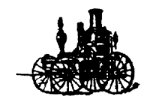Firefighting

Firefighting equipment of all types is wanted, from fire marks to uniforms to toy fire trucks. Leather fire buckets with the name of the firehouse, the city, or the city’s insignia painted or stamped on them were used by firefighters in America from the seventeenth and eighteenth centuries. It is said that every little boy wanted to be a fireman or a train engineer 75 years ago and the collectors today reflect this interest.
Firefighters save lives with the help of countless tools—fire extinguishers, helmets, fire trucks, and hoses, to name but a few. Many of these objects, especially those from the 19th century, have become highly collectible.
One of the firefighter’s most basic tools is the fire extinguisher, which did not always resemble the familiar items that pervade schools and commercial buildings today. From about 1868 onward, fire extinguishers were basically pint- and quart-size glass grenades containing simple chemicals like saltwater, muriate of ammonia, bicarbonate of soda, and salt. Sealed with cement, they were hurled into fires where they would shatter upon impact, releasing the chemicals inside.
The grenades fell out of favor around 1903 and were eventually replaced by the more familiar pump-type brass and copper extinguishers made by companies like Elkhart. For obvious reasons, only unused grenades can be collected.
Badges are another class of firefighter memorabilia. The New York legislature essentially invented the badge in 1855 as a way of solving a common difficulty that firefighters faced—non-firefighters attempting to join the fire lines, often with chaotic results. The legislature asked the Common Council to design a badge in order to identify firefighters conspicuously. Other cities adopted the practice once it proved successful.
Although the badge began as a single design, other shapes and types appeared around 1860: a badge for a fire engine company, a badge for a fire hose company, and so on. These badges had numbers to designate both the company and the individual wearer. While fire departments still use firemen’s badges today, these other varieties are very rare and collectible today.
Also collectible are so-called presentation badges, which were given to a fireman as a mark of distinction—for promotion or retirement, for example. These badges were often engraved and made from gold or silver.
Badges weren’t the only firefighter memorabilia to be invented in New York City. Around 1740, Jacobus Turck invented the first fire hat. With the exception of a few aluminum helmets made in the late 19th century, fire hats were made of leather from their introduction until relatively recent times (though some helmets today are still leather). The most prominent helmet maker of the time was Henry Gratacap, who started producing helmets in 1836...
Toy fire engines first appeared around 1880, made of cast iron and tinplate. Known as fire wagons, these toys included pumper wagons, horse-drawn chief’s wagons, ladder wagons, and other accessories.
Interestingly, the toy fire trucks of the 1920s predicted the engines of today. Toy makers combined the traditional horse-drawn wagons with a truck body to create something similar to today’s fire engine. The three most famous makers of these early fire-fighting toys are Dent, Kenton, and Hubley, though other companies like Tonka and Marx would later make smaller scale tin and steel engines.
Note that cast-iron fire trucks have been frequently reproduced, so it’s important to look at authenticity.














